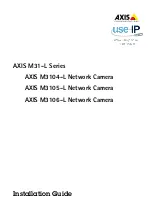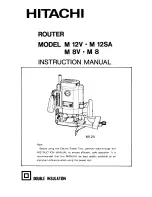
929
Configuring IPv6 Unicast Routing
Information About IPv6
Multiprotocol BGP for IPv6, page 931
SNMP and Syslog Over IPv6, page 932
128-Bit Unicast Addresses
The switch supports aggregatable global unicast addresses and link-local unicast addresses. It does not support
site-local unicast addresses.
Aggregatable global unicast addresses are IPv6 addresses from the aggregatable global unicast prefix. The address
structure enables strict aggregation of routing prefixes and limits the number of routing table entries in the global
routing table. These addresses are used on links that are aggregated through organizations and eventually to the
Internet service provider.
These addresses are defined by a global routing prefix, a subnet ID, and an interface ID. Current global unicast
address allocation uses the range of addresses that start with binary value 001 (2000::/3). Addresses with a prefix
of 2000::/3(001) through E000::/3(111) must have 64-bit interface identifiers in the extended unique identifier
(EUI)-64 format.
Link local unicast addresses can be automatically configured on any interface by using the link-local prefix
FE80::/10(1111 1110 10) and the interface identifier in the modified EUI format. Link-local addresses are used in the
neighbor discovery protocol (NDP) and the stateless autoconfiguration process. Nodes on a local link use link-local
addresses and do not require globally unique addresses to communicate. IPv6 routers do not forward packets with
link-local source or destination addresses to other links.
DNS for IPv6
IPv6 supports Domain Name System (DNS) record types in the DNS name-to-address and address-to-name lookup
processes. The DNS AAAA resource record types support IPv6 addresses and are equivalent to an A address record in
IPv4. The switch supports DNS resolution for IPv4 and IPv6.
Path MTU Discovery for IPv6 Unicast
The switch supports advertising the system maximum transmission unit (MTU) to IPv6 nodes and path MTU discovery.
Path MTU discovery allows a host to dynamically discover and adjust to differences in the MTU size of every link along a
given data path. In IPv6, if a link along the path is not large enough to accommodate the packet size, the source of the
packet handles the fragmentation. The switch does not support path MTU discovery for multicast packets.
ICMPv6
The Internet Control Message Protocol (ICMP) in IPv6 generates error messages, such as ICMP destination unreachable
messages, to report errors during processing and other diagnostic functions. In IPv6, ICMP packets are also used in the
neighbor discovery protocol and path MTU discovery.
Neighbor Discovery
The switch supports NDP for IPv6, a protocol running on top of ICMPv6, and static neighbor entries for IPv6 stations that
do not support NDP. The IPv6 neighbor discovery process uses ICMP messages and solicited-node multicast addresses
to determine the link-layer address of a neighbor on the same network (local link), to verify the reachability of the
neighbor, and to keep track of neighboring routers.
The switch supports ICMPv6 redirect for routes with mask lengths less than 64 bits. ICMP redirect is not supported for
host routes or for summarized routes with mask lengths greater than 64 bits.
Содержание IE 4000
Страница 12: ...8 Configuration Overview Default Settings After Initial Switch Configuration ...
Страница 52: ...48 Configuring Interfaces Monitoring and Maintaining the Interfaces ...
Страница 108: ...104 Configuring Switch Clusters Additional References ...
Страница 128: ...124 Performing Switch Administration Additional References ...
Страница 130: ...126 Configuring PTP ...
Страница 140: ...136 Configuring CIP Additional References ...
Страница 146: ...142 Configuring SDM Templates Configuration Examples for Configuring SDM Templates ...
Страница 192: ...188 Configuring Switch Based Authentication Additional References ...
Страница 244: ...240 Configuring IEEE 802 1x Port Based Authentication Additional References ...
Страница 274: ...270 Configuring SGT Exchange Protocol over TCP SXP and Layer 3 Transport Configuring Cisco TrustSec Caching ...
Страница 298: ...294 Configuring VLANs Additional References ...
Страница 336: ...332 Configuring STP Additional References ...
Страница 408: ...404 Configuring DHCP Additional References ...
Страница 450: ...446 Configuring IGMP Snooping and MVR Additional References ...
Страница 490: ...486 Configuring SPAN and RSPAN Additional References ...
Страница 502: ...498 Configuring Layer 2 NAT ...
Страница 559: ...555 Configuring Network Security with ACLs How to Configure Network Security with ACLs Creating a Numbered Extended ACL ...
Страница 770: ...766 Configuring IPv6 MLD Snooping Related Documents ...
Страница 930: ...926 Configuring IP Unicast Routing Related Documents ...
Страница 956: ...952 Configuring IPv6 Unicast Routing Configuring IPv6 network 2010 AB8 2 48 network 2010 AB8 3 48 exit address family ...
Страница 976: ...972 Configuring Cisco IOS IP SLAs Operations Additional References ...
Страница 978: ...974 Dying Gasp ...
Страница 990: ...986 Configuring Enhanced Object Tracking Monitoring Enhanced Object Tracking ...
Страница 994: ...990 Configuring MODBUS TCP Displaying MODBUS TCP Information ...
Страница 996: ...992 Ethernet CFM ...
Страница 1030: ...1026 Working with the Cisco IOS File System Configuration Files and Software Images Working with Software Images ...
Страница 1066: ...1062 Using an SD Card SD Card Alarms ...
















































